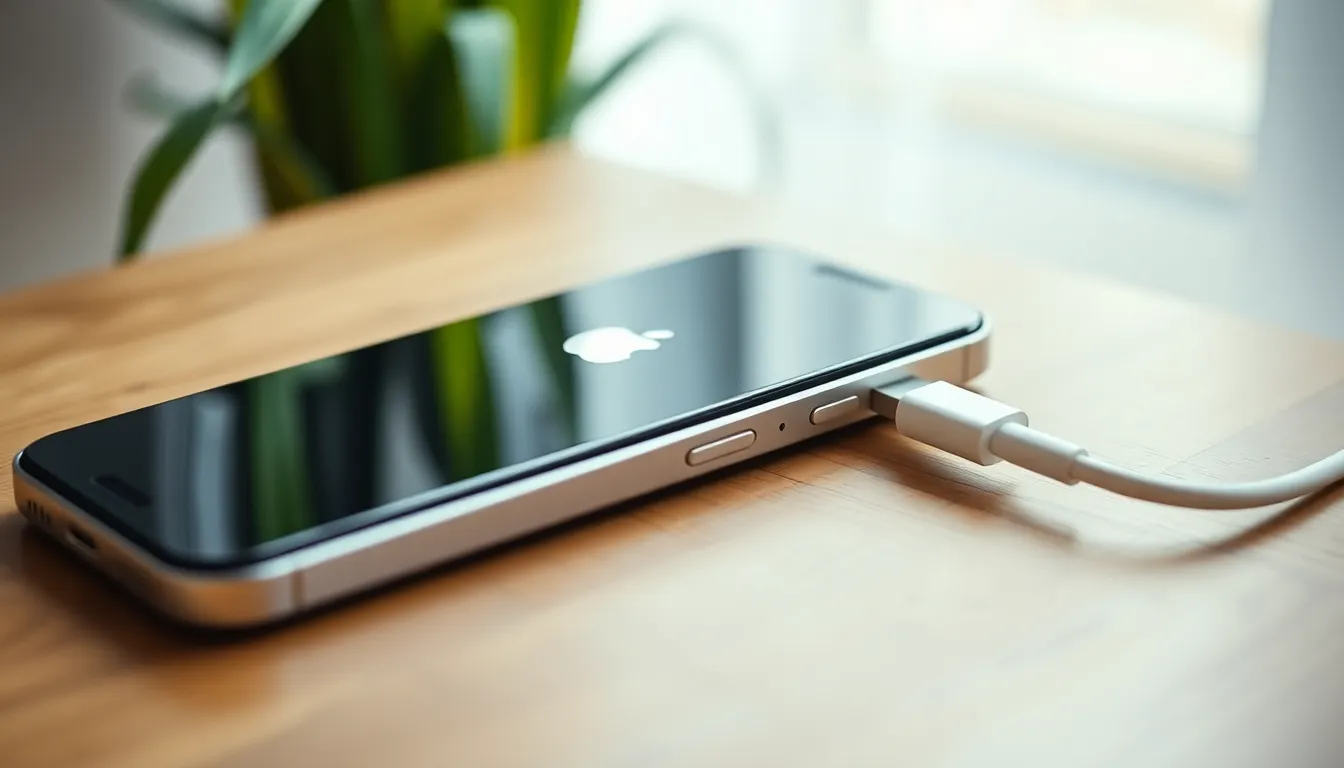Picture this: you’re ready to capture the perfect sunset, but your iPhone decides it’s time for a nap—like a toddler who just refuses to wake up. We’ve all been there, staring at that lifeless screen, wondering if it’s gone to the great tech graveyard in the sky. The question on everyone’s mind is, how long does it actually take for a dead iPhone to spring back to life?
Table of Contents
ToggleUnderstanding Dead iPhones
iPhones can suddenly stop working, leaving users puzzled. Various factors contribute to an iPhone’s demise, so understanding them is essential.
Common Causes of iPhone Death
Battery failure ranks as a leading cause of iPhone death, often due to age or extensive use. Software glitches can also lead to unexpected shutdowns, sometimes after an update. Physical damage from drops or water exposure severely impacts functionality. Occasionally, hardware issues arise, affecting internal components like the motherboard. Users should account for external factors, such as extreme temperatures that inhibit performance.
Signs of a Dead iPhone
Several indicators reveal a dead iPhone. A completely black screen with no response signifies a significant issue. Failure to invoke charging through multiple chargers indicates potential battery or hardware failure. If the device’s Apple logo fails to appear after an extended charging period, it’s probably dead. Buzzes or vibrations without a display also point to underlying problems. Users should consider these signs to assess the device’s condition accurately.
Factors Affecting Restart Time

Several factors influence how long it takes for a dead iPhone to turn on again. Understanding these can help users troubleshoot effectively.
Battery Level and Condition
Battery level plays a crucial role in restart time. Devices with significantly low battery levels may take longer to respond after being charged, especially if they are older or have degraded batteries. Aging batteries often struggle to hold a charge, which can delay functionality. A completely discharged battery can take anywhere from 10 minutes to several hours to respond. After connecting to a power source, it’s important to wait for a few moments before expecting any indication of life. Users should monitor battery health through settings to assess performance over time.
Charging Equipment Used
Charging equipment also impacts how quickly an iPhone restarts. Using non-certified cables or power adapters may slow charging, thus prolonging wait times. Apple recommends using original accessories, as they ensure optimal charging speeds. Fast chargers usually revive dead devices faster compared to standard chargers. For example, a certified 20W adapter can significantly reduce restart time compared to lower wattage chargers. If the charging cable or port is damaged, it may further hinder the charging process, leading to longer restart delays.
Typical Waiting Period
Restoring a dead iPhone involves specific waiting periods after charging. Factors like battery condition and charging equipment significantly influence the timeframe.
Immediate Response After Charging
An iPhone might show an immediate response after connecting it to a charger, typically within 10 minutes if the battery isn’t completely drained. Users often notice the screen lighting up, indicating charging has started. In cases where the battery is severely depleted, the device may take longer to respond. Heavily used iPhones, particularly older models, tend to require more time. Not every charger prompts a quick response; original accessories generally work more effectively than third-party options.
Timeframe for Full Recovery
Full recovery can vary greatly, where a completely dead iPhone might take anywhere from 30 minutes to several hours to turn on completely. Devices with compromised batteries may struggle longer with recovery. Testing with a known-good charger can expedite the process, often providing a clearer indication of battery health. Users should note that once the Apple logo appears, the device is on the path to recovery. Regular use and maintenance of the charging port enhance the likelihood of a quick restart.
Tips for Fast Recovery
Taking quick action can significantly speed up the recovery of a dead iPhone. Implementing best practices helps users efficiently charge their devices.
Best Practices for Charging
Using original charging accessories proves effective for rapid restoration. Device users should connect their iPhones to certified cables and adapters. A non-certified charger may prolong charging times, negatively impacting recovery efforts. Additionally, ensuring that the charging port is clean enhances the connection between the charger and the device. Users benefit from avoiding extreme temperatures, as they can affect battery performance during the charging process. If a dead iPhone isn’t responding quickly, letting it charge for at least 10 to 30 minutes before troubleshooting further can yield better results.
Maintenance to Prevent Future Issues
Regular maintenance contributes to a device’s longevity. Users should inspect the charging port periodically for dust and debris. Cleaning the port with a soft brush can prevent connectivity issues. Battery replacement may become necessary for older devices where battery health has declined. Additionally, protecting the phone with a quality case prevents physical damage. Keeping the software updated ensures optimal performance, minimizing the likelihood of glitches that lead to shutdowns. Following these maintenance steps can significantly enhance the user experience and reduce unexpected device failures.
Understanding how long it takes for a dead iPhone to turn on can help alleviate the frustration of unexpected shutdowns. Factors like battery condition and charging equipment play crucial roles in determining recovery time. Users should be aware that while some devices may respond quickly after charging, others might take longer due to severe battery depletion or damage.
By following best practices for charging and maintenance, users can improve their chances of a swift restart. Keeping charging ports clean and using certified accessories can make a significant difference. Regular care not only enhances device longevity but also ensures a smoother user experience, reducing the likelihood of future shutdowns.


